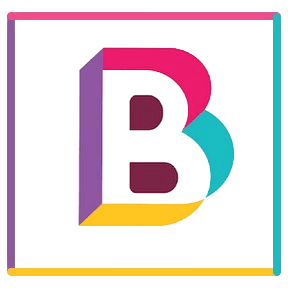Ever had a light bulb moment about an idea that could disrupt the software industry? You’re not alone! Many aspiring entrepreneurs dream of launching their own SaaS products, but how do you know if your idea will swim or sink in the vast ocean of existing solutions?
Assessing the viability of your Software as a Service (SaaS) idea is essential for steering your venture towards success. With the SaaS market booming and the demand for innovative solutions continually rising, it’s crucial to evaluate your concept systematically. In this article, we’ll dive into practical steps and strategies to help you gauge whether your SaaS idea has what it takes to thrive.
Understanding the SaaS Landscape
Before delving deep into specific assessments, let’s set the stage by understanding what makes the SaaS industry unique. The SaaS model offers software solutions to users through the internet, usually via subscription. This flexible approach has led to explosive growth, with the global SaaS market projected to reach $1 trillion by 2025.
Recognizing your competition is key. With countless solutions available, your SaaS product will need a strong value proposition to capture the attention of potential users.
The Importance of Market Research
Market research is your first line of defense. It helps you understand your target audience, industry trends, and potential competitors. Here’s what you need to focus on:
For example, a digital marketing tool can analyze competitors like HubSpot or Buffer to find out what features users rave about and what challenges they face. This information is critical for carving out your niche.
Testing Your SaaS Idea
After conducting thorough market research, it’s time to put your idea to the test. The following steps will ensure that your SaaS concept has a fighting chance:
Developing a Minimum Viable Product (MVP)
Creating an MVP means building the core functionality of your software that delivers the main value to users. It allows you to enter the market quickly and gather real user feedback without substantial upfront investment.
Here’s how to approach your MVP:
Consider Slack’s journey, which started as an internal communication tool before refining features to attract external users. Their MVP was simple but effective, leading to exponential growth in a short time.
Leveraging User Feedback
User feedback is invaluable when refining your SaaS idea. Listening to your early users will not only enhance user experience but also strengthen product-market fit.
Key strategies for gathering user feedback include:
Utilizing platforms like UserTesting can facilitate gathering user insights rapidly. Companies that prioritize user feedback, like Airbnb, not only improve their core features but also strengthen user loyalty.
Financial Viability Analysis
It’s time to tackle the numbers! Financial viability is a crucial aspect of any business model, particularly in SaaS. You need to ensure that your idea can not only attract users but also generate revenue.
Cost Structure Overview
Understanding your costs is the first step:
It’s critical to remember that SaaS businesses tend to have high initial costs, but the potential for recurring revenue can lead to profitability in the long run. Platforms like ProfitWell can help analyze your SaaS metrics more effectively.
Revenue Projections
Once you have an overview of your costs, it’s time to project your revenue.
Research shows that SaaS companies with a solid balance between CAC and CLV often enjoy sustainable growth. For instance, Mixpanel has succeeded primarily due to its strong emphasis on retaining users through valuable offers.
Evaluating Competitive Differentiation
In a crowded marketplace, distinguishing your offering is key to capturing the minds and hearts of your target audience.
Identifying Your Unique Selling Proposition (USP)
Your USP is what sets you apart from competitors. Here’s how to clarify it:
Dropbox successfully differentiated itself in the cloud storage space by emphasizing its seamless user interface and impactful referral programs, thereby gaining an extensive user base.
Continuous Market Adaptation
SaaS is not a “set it and forget it” industry. You must be willing to adapt continuously to market changes and user needs.
For instance, Microsoft Teams evolved based on the increased demand for collaborative tools, improving its appeal in the remote work era.
Creating a Sustainable Sales & Marketing Strategy
Your software’s viability will also depend on its sales and marketing strategies, which are crucial for visibility and user acquisition.
Developing an Effective Marketing Plan
A well-thought-out marketing strategy can significantly impact your SaaS’s success.
Zendesk utilized content marketing to become a thought leader in customer service solutions, highlighting the importance of understanding user pain points to shape their offerings.
Implementing Sales Tactics
Just as important as marketing is having a strong sales strategy.
Spotify successfully employs a freemium model, encouraging many users to convert to the premium version by showcasing the value and unique features available through their subscription.
Navigating Legal and Compliance Considerations
As a SaaS entrepreneur, you need to ensure that your product complies with relevant laws and regulations. Ignoring this could lead to serious issues down the line.
Data Protection Laws
Data breaches and privacy concerns are increasingly critical in today’s digital age. Familiarizing yourself with legal frameworks, such as GDPR and CCPA, is a must:
Consider how companies like Trello have prioritized user data privacy, gaining customer trust in a competitive landscape!
Intellectual Property Protection
Intellectual property is another aspect to factor in. By registering your software’s trademarks and copyrights, you protect your idea from potential theft.
For example, Salesforce succeeded in protecting their unique offerings through patents while establishing itself as a leading CRM provider.
Building a Strong Team
Your SaaS success isn’t solely dependent on your idea; it’s also about the people behind it.
Hiring for Diverse Skillsets
Building a capable team ensures your SaaS product’s success. Here’s what you should consider:
Zoom is an example of a company that thrived due to its adept team of tech experts who continually improved the software’s functionality based on user interactions.
Encouraging a Collaborative Culture
Creating a collaborative environment boosts creativity and efficiency.
Companies like Asana prioritize team culture, which plays a key role in employee satisfaction and creativity, further enhancing their product development process.
It’s crucial to rigorously assess your SaaS idea’s viability before diving in. Whether it’s through understanding market trends, analyzing financial viability, evaluating competitive differentiation, or assembling a strong team, having a comprehensive plan will not only prepare you for the journey ahead but increase your chances of success.
So, how does your SaaS idea stack up? Are you ready to take a leap and transform that spark of inspiration into something incredible?

